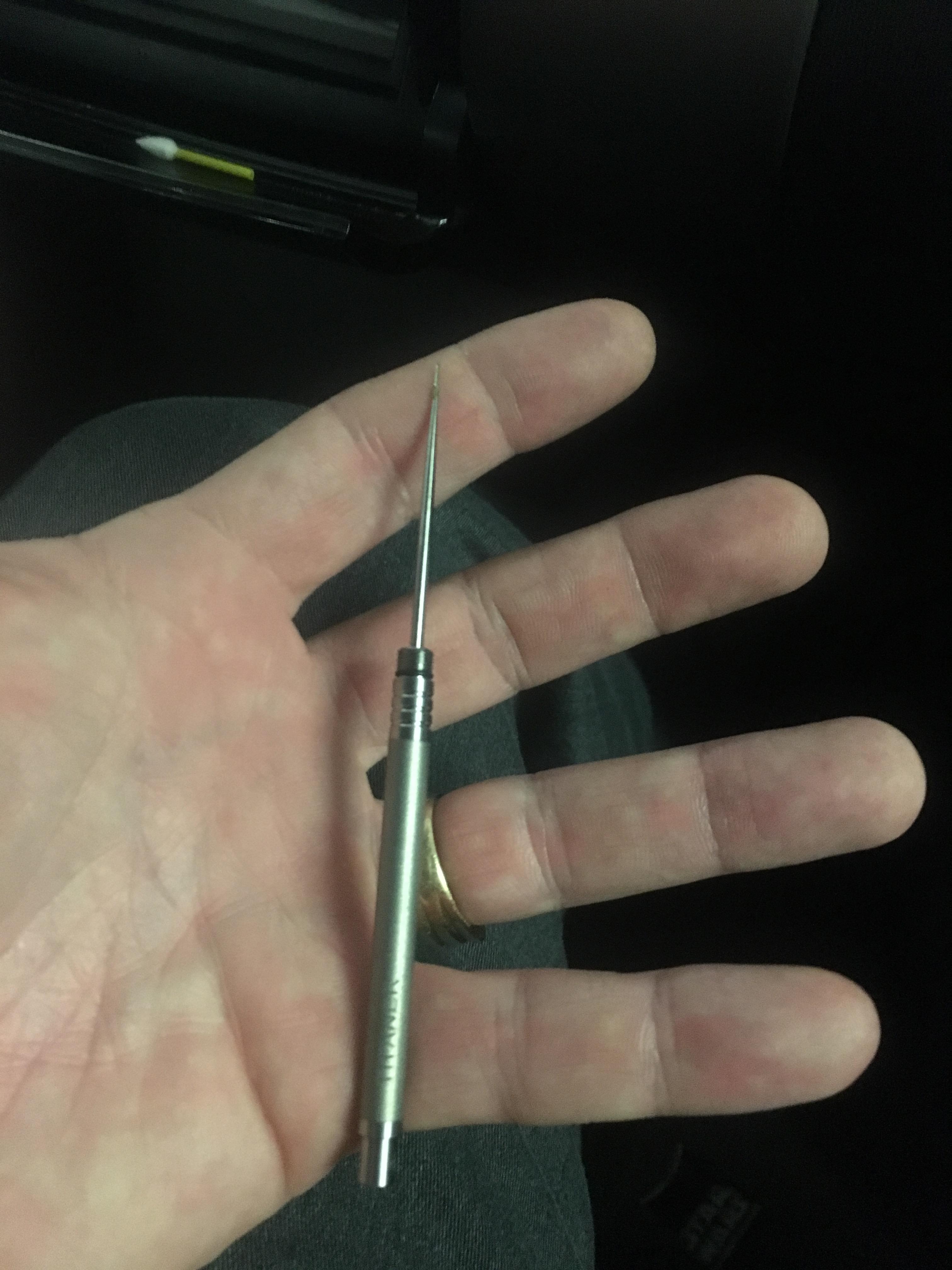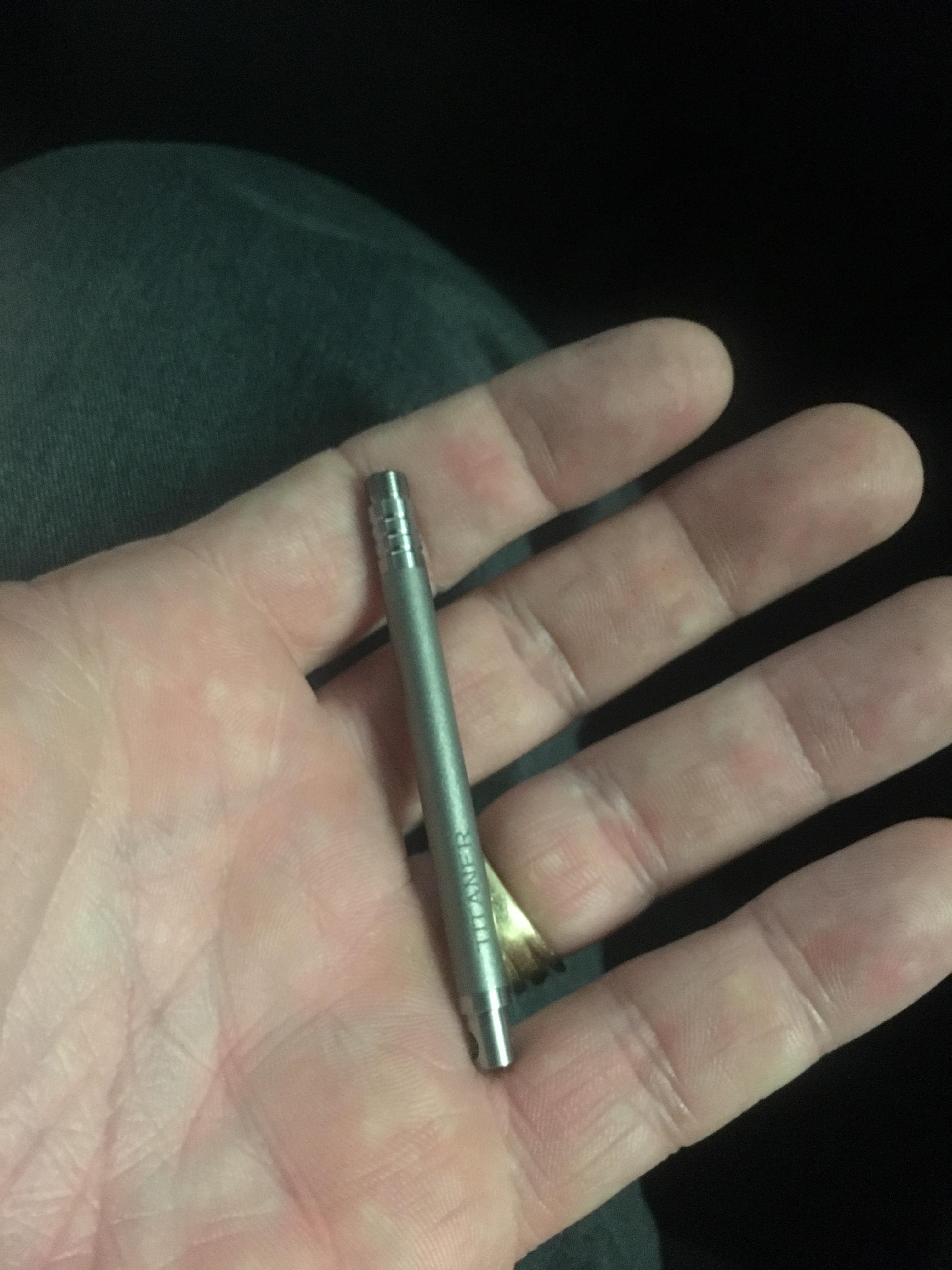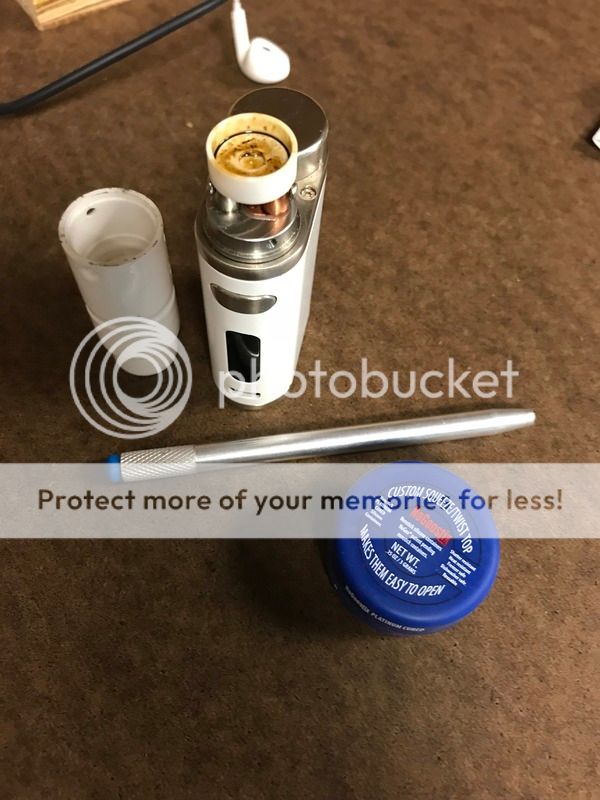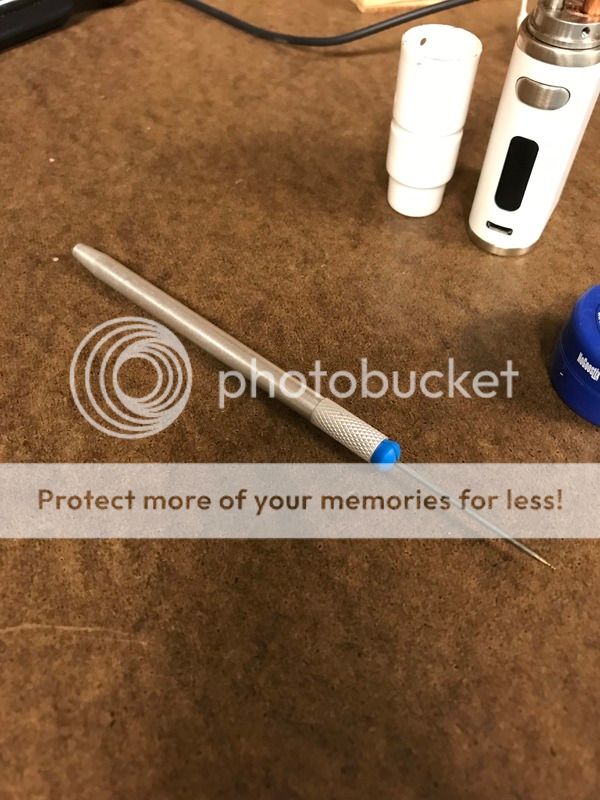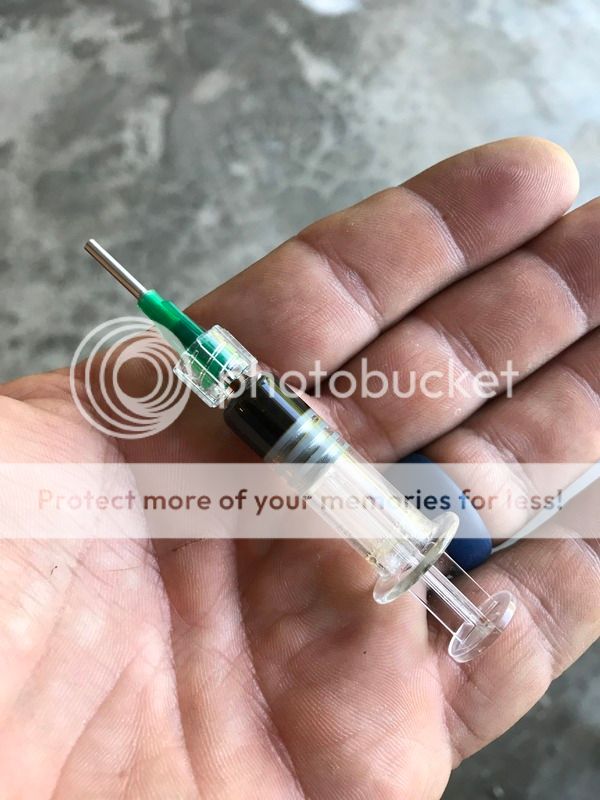@OF, I only try to make this point because I respect your knowledge and opinions very much,

and I've litigated this with you over the v2.5, but I must say,
your recommended settings are very cautious! Cautious to the extreme!
The only reason I even care is because many other people will automatically defer to your recommendation and be reluctant to explore around and try different settings and techniques (as you also encourage them to do) so I feel that alot of newbs can be let down if they just blindly follow

V 2.5: m=245, 12.5 W, 390F
V 3 (small): m=245, 12.5W, 390F
Just my opinions and experiences here;
V2.5
TCR 245 is good for the 7mm donuts / v2.5 atomizer. It makes the temp on the screen and the actual donut pretty close. 12.5w for the 7mm donut is a little bit above the bare minimum to reach protection, but I vaped these little donuts on TC modes at
20-30w (25 mostly) for nearly 2 years and
I never broke a single donut from high watts in temp control vaping, having vaped dozens of grams on many v2.5 atomizers. I only "broke" them by burning clean above 12w or by contacting the donut too much
12.5w takes 3-4+ seconds to reach temp, while 25w is just over 1 sec, and a heavily loaded, air-cooled 7mm donut can take 14-16w to maintain temp at times, so 12.5w will have it struggling and producing less vapor.
V3.0 (small - medium really)
I find TCR 245 to make these 10mm donuts run hotter than the display indicates, by at least 50F ore more with the swings. I use TCR 190-200 on the 10mm discs to make the temperatures match, if the user cares about temperatures matching (most users dont care)
12.5w is severely under powering a 10mm donut, IMO. What does it take like 5 or 6 seconds to reach protection under load? Maybe some people don't want to reach temp protection, (you can do that with PID) or only want a very slow, controlled trickle of vape, and we're all free to use our devices as we like, but I think your V3 recommendations should have a qualifier there.

I see my 10mm donuts normally pull 14-17w under heavy load, even after protection! 12.5w leaves alot on the table (floor, cup)
Most users want more vapor (the most vapor) and want it quick.
There's no
necessary downside in running reasonably higher watts in temp control, no burning or foul taste, no big temp overshoots are inevitable.
Using a good mod, with an accurate stable resistance locked in,
(no loose screws and oil filled posts) and possible well-tuned PI(D) with myev/AF even better,
no body is blowing up donuts rapidly by running their V3s at 20-30w. That is the recommended range by DT.
Yes, we can take it to extremes, and get sub-second warmups with 40-50+w. Go above that on a less-than-tightly tuned mod, and we will probably see more busted donuts, or much shorter life spans.
But if the blowing up donuts is your only reason for going low watts, its just an undue concern! I don't see or hear it happening! I've run several 10mm donuts for many months now at 28w and still haven't blown a single one! (only broke a wire on 2 during assembly)
V 3 (large): m=170, 18W, 390F
Gen 2: m-245, 24W, 390F
Best wishes,
OF
I haven't used the
large donuts much since the mediums came out, and it seems maybe the same for you OF?

TCR 170 is a reasonable setting for (old, discontinued) 13mm discs. I found that to be a little low against my readings on the IR gun and was using TCR 190, but that's ok.

However, after those first couple of V3 shipments, with the lower-resistance large donuts (0.4-0.5Ω) I believe all the large donuts changed to a higher resistance (~0.6Ω+) and require a TCR of at least 300 or so to make heat at a reasonable temp target. I don't think many people are using the old large donuts, and TCR 170 will do little more than melt oil on big donuts shipping today.

But again with the watts, 18w or so takes a long time and leaves alot more oil on the bottom of the cup IME. 30-40w is reasonable for the large donuts, but if you want a slower warmup, go for it.
Gen 2 / DC, same idea pretty much, minus the oil falling into the cup.
Now I've nit-picked your settings one by one, and I even though you say it all the time, I don't doubt the sincerity of your best wishes

FWIW my 'take' on PI modifications for our use is it's a bad idea. It makes sense for the e-cig guys with huge heaters and lots of 'juice' in intimate contact with them. Heat can be instantly transferred to the load so you can 'trick' the unit into 'coming on very strong' at the start of a hit.
We don't enjoy that instant advantage, there's a time constant built into the V3 due to the glazing and substrate (which have to be heated before any concentrate can). Yes, you can overdrive the heater a bit, but that's not going to defeat the delay in getting the heat to the load. And, taken to extremes (as folks often do.....) it can, I think, invite expansion related problems with the expanding heater trapped inside a cool (and therefore contracted) glass shell.
OF
@OF: in the Project and BULLI/custom RDA's we do use PID and it's a must, but our scenario is different: we have coils in direct contact with the air and it's full-on convection, so there's no such lag to buffer the changes. Half a second of overshoot and you end up with a charred hot spot in the middle of the load and the taste is spoiled for the entire session, no matter how much you stir afterwards.
Plus the TC algo on the stock joyetech firmware is pretty crap, you can see the coil pulsing as the update rate is slow and the thing just cuts on and off brutally.
IME, a well-tuned donut just with a good TCR, watt, and temperaure # with
an accurate locked in Ω on a good mod is pretty stable and accurate on the temps 95% of the time.
And the points about differences in materials, thermal transfer, and the "lag" or "buffer" that us ceramic donuts guys have regarding TC are taken. But the benefits of PID control seem apparent to me. I've had a couple "problem donuts" that had fluctuating temps and wattages and I tried
everything possible to remedy it. Only by trying
@bizwaxzion's PI settings with AF did I get that problem donut tamed and with stable temps and watts now.
And regarding the performance of the stock firmware on most eleaf / joyetech mods, vs. AF or myEV software, I don't think it's as bad as @KeroZen makes it out to be, perhaps because of our ceramic buffer,
But by observed temperatures on the screen on the mod, the NFE device monitor, and actual measurements with an IR thermometer, the 3rd party software is much more stable with less overshoot, if you can figure it out (not that hard)
Even just visually, through my large glass dab bulbs that sit atop my V3 bases, the spiking of temps and watts on my pico was apparent in an
inconsistent, choppy, pulsing vapor stream. I installed AF and used only the same TCR settings, and the vapor stream from my pico's V3 was now a
steady flowing stream. 
The mod should do just fine, it's the doughnut that takes a beating......IMO for nothing useful in return? We wait a few seconds for full vapor, is one second more or less a big change? You get more variation than that with load size, right? Having to heat a bunch of concentrate slows the action relative to when there is very little?
I suggest you have a spare in hand, human nature can lead you (or anyone else) to push it too far exploring? If you have a backup handy, that's probably insurance.....
OF
This is one area where I have a differing opinion, I feel the sooner the heating surface gets to temperature, the better, in regards to efficient vaporization. I feel this largely impacts duration and intensity of effect. The most ideal (IMO) being a surface which is already at temperature before concentrate is applied, such as a quartz banger or e-nail. I find myself topping up quite a bit more often when using a concentrate pen versus low temp dabbing from a nail.
Obviously, I'm with inverted here.

I already said it, but 20-30w on V3 donuts is not much of a beating at all, it helps get you where you want to go in a reasonable time with less oil melting slowly towards the ground, not being made into vapor. You still can't get a V3 to act like a real e-nail, with much more thermal energy stored, but you can safely maximize its potential and effectiveness by not underpowering it

Are you saying a minor change in heat up time really changes anything but the time scale? And again, you see a change in heat up time with load level, I think this is a bigger factor WRT time?
Guys should explore it if they want, and no doubt some already are/have. I wish them well, I just don't see a big advantage here. Nothing like TCR regulation, for instance.
OF
It does change the amount of vapor produced in that given time period, and how much of the oil ends up being vaporized relative to the portion being melted into the cup for a single hit, that's what changing watts does.
But yes, I do agree people should explore, if they care enough, and have the time and oil to play around with, and then decide what they like for themselves. Let's not corral ourselves in too narrow a range, though. The donuts are cheap, like we said.

 (finally)
(finally)






 and I've litigated this with you over the v2.5, but I must say, your recommended settings are very cautious! Cautious to the extreme!
and I've litigated this with you over the v2.5, but I must say, your recommended settings are very cautious! Cautious to the extreme! 
 I see my 10mm donuts normally pull 14-17w under heavy load, even after protection! 12.5w leaves alot on the table (floor, cup)
I see my 10mm donuts normally pull 14-17w under heavy load, even after protection! 12.5w leaves alot on the table (floor, cup) TCR 170 is a reasonable setting for (old, discontinued) 13mm discs. I found that to be a little low against my readings on the IR gun and was using TCR 190, but that's ok.
TCR 170 is a reasonable setting for (old, discontinued) 13mm discs. I found that to be a little low against my readings on the IR gun and was using TCR 190, but that's ok. 
 I already said it, but 20-30w on V3 donuts is not much of a beating at all, it helps get you where you want to go in a reasonable time with less oil melting slowly towards the ground, not being made into vapor. You still can't get a V3 to act like a real e-nail, with much more thermal energy stored, but you can safely maximize its potential and effectiveness by not underpowering it
I already said it, but 20-30w on V3 donuts is not much of a beating at all, it helps get you where you want to go in a reasonable time with less oil melting slowly towards the ground, not being made into vapor. You still can't get a V3 to act like a real e-nail, with much more thermal energy stored, but you can safely maximize its potential and effectiveness by not underpowering it 
